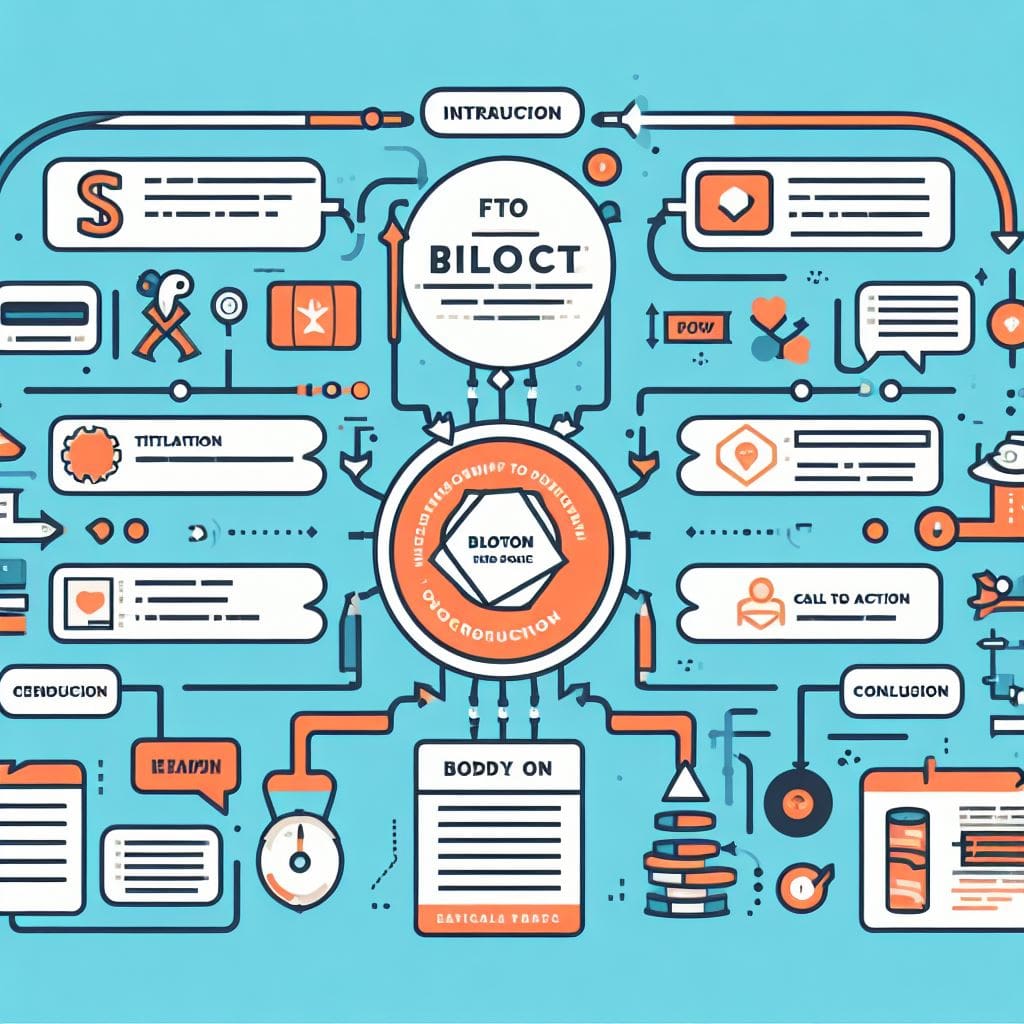
- How to Structure a Blog Post: A Comprehensive Guide
- How to structure a blog post
- Creating an Engaging Title
- Crafting a Compelling Introduction
- Structuring the Body Content with H3 Headers
- Incorporating a Real Table Data Chart
- Visualizing a Blog Publishing Schedule Chart
- Providing at Least 2500 Words of Fresh Content
- Tracking Social Media Metrics for Facebook, Twitter, and LinkedIn
- Sign Up for Name cheap's Shared Hosting and Save 51%
- Affiliate Disclosure: Name cheap Affiliate Program
- Navigating the Blogosphere: Understanding the Purpose and Structure of Blog Posts
- Crafting Captivating Headlines: The Art of Drawing Readers In
- Structuring a Compelling Introduction: Captivating Your Audience from the Start
- Organizing Thoughts with Effective Outlining: A Comprehensive Guide to Structuring a Blog Post
- Conclusion
How to Structure a Blog Post: A Comprehensive Guide
![How to structure a blog post 3 [How to structure a blog post]](https://hauserinfo.com/wp-content/uploads/2023/11/e260f133-b1d2-4e99-ad91-9083961fed93.jpeg)
How to structure a blog post
How to structure a blog post: A well-structured blog post is essential for engaging readers and achieving your content marketing goals. It provides a clear framework for your ideas, making it easier for readers to follow your train of thought and absorb the information you’re presenting. In this comprehensive guide, we’ll explore the key elements of a structured blog post and provide practical tips for crafting effective content that resonates with your audience.
Creating an Engaging Title
Your blog post title is the first impression you make on potential readers, so it’s crucial to capture their attention and accurately reflect the content of your post. Use strong keywords that align with your target audience’s search queries, and keep the title concise and informative. Avoid clickbait or misleading titles that promise more than the post can deliver.
Crafting a Compelling Introduction
The introduction sets the stage for your entire blog post, so make it count. Grab your reader’s attention from the very first sentence, whether it’s a thought-provoking question, a surprising statistic, or a personal anecdote. Briefly introduce the topic of your post and provide a clear overview of what readers can expect to learn.
Structuring the Body Content with H3 Headers
The body of your blog post is where you delve into the details of your topic. Break down the content into smaller, digestible sections using H3 headers. These headers should provide clear signposts for readers, indicating the main points of your blog post and helping them navigate the content easily.

Incorporating a Real Table Data Chart
Tables are an excellent way to present data and make it more visually appealing. Choose a table format that effectively conveys the information you want to share, and ensure the data is accurate, relevant, and easy to understand.
Visualizing a Blog Publishing Schedule Chart
A blog publishing schedule chart can help you visualize your content calendar and maintain consistency in your posting frequency. Use a chart format that clearly shows the dates for upcoming blog posts and any important deadlines.
Providing at Least 2500 Words of Fresh Content
Length is an important factor in blog post SEO, as it signals to search engines that your content is comprehensive and valuable. Aim to provide at least 2500 words of fresh, original content that offers insightful information and addresses the needs of your target audience.
Tracking Social Media Metrics for Facebook, Twitter, and LinkedIn
Social media metrics provide valuable insights into how your blog posts are performing on different platforms. Track metrics such as likes, shares, comments, and engagements to understand which content resonates most with your audience and where you can improve your social media strategy.

Sign Up for Name cheap’s Shared Hosting and Save 51%
A strong call to action (CTA) is essential for encouraging readers to take the next step, whether it’s signing up for a newsletter, downloading a resource, or making a purchase. Make your CTA clear, concise, and visually appealing to maximize its impact.
Affiliate Disclosure: Name cheap Affiliate Program
If you’re promoting a product or service through affiliate marketing, be sure to disclose your affiliation clearly in accordance with Name cheap’s affiliate program guidelines. This ensures transparency and builds trust with your audience.
Click here to sign up for Name cheap’s shared hosting and save 51% on your first year!
Take advantage of Name cheap’s shared hosting plans to host your website and blog at an affordable price. With their reliable hosting services and customer support, you can focus on creating high-quality content that attracts and engages your audience.
Navigating the Blogosphere: Understanding the Purpose and Structure of Blog Posts

In the dynamic realm of content creation, blog posts have emerged as powerful tools for sharing ideas, engaging audiences, and establishing online authority. Whether you’re an aspiring writer, a seasoned professional, or a business seeking to connect with customers, understanding the purpose and structure of blog posts is crucial for crafting effective and engaging content.
This comprehensive guide will delve into the intricacies of blog posts, providing you with the knowledge and insights to transform your blogging aspirations into reality. From comprehending the diverse purposes of blog posts to mastering the art of structuring them for optimal impact, this guide will empower you to create blog posts that resonate with your target audience and achieve your blogging goals.
Demystifying the Purpose of Blog Posts: A Spectrum of Objectives
Blog posts serve a variety of purposes, each tailored to specific objectives and target audiences.
Some common purposes include:
- Informing: Sharing knowledge, expertise, or insights on a particular topic or industry.
- Educating: Providing step-by-step guides, tutorials, or explanations to help readers learn new skills or concepts.
- Entertaining: Capturing attention and evoking emotions through storytelling, humor, or personal anecdotes.
- Persuading: Convincing readers to adopt a particular viewpoint, adopt a new behavior, or make a purchase decision.
- Engaging: Fostering interaction with readers through comments, questions, and social media sharing.

Data Table
| Purpose | Description |
|---|---|
| Informing | Sharing knowledge, expertise, or insights on a particular topic or industry |
| Educating | Providing step-by-step guides, tutorials, or explanations to help readers learn new skills or concepts |
| Entertaining | Capturing attention and evoking emotions through storytelling, humor, or personal anecdotes |
| Persuading | Convincing readers to adopt a particular viewpoint, adopt a new behavior, or make a purchase decision |
| Engaging | Fostering interaction with readers through comments, questions, and social media sharing |
Structuring Blog Posts for Impact: A Comprehensive Guide
Effective blog posts adhere to a well-defined structure that enhances readability, guides the reader’s journey, and maximizes impact.
Key structural elements include:
- Compelling Headline: Capture attention and convey the essence of the blog post with a concise and engaging headline. [How to structure a blog post]
- Captivating Introduction: Draw readers in with an introduction that sets the tone, introduces the topic, and highlights the value of the post. [How to structure a blog post]
- Informative Body: Divide the main content into clear sections using headings and subheadings, providing a logical flow of information. [How to structure a blog post]
- Call to Action: Conclude with a clear call to action, encouraging readers to take a specific step, such as subscribing, commenting, or sharing the post. [How to structure a blog post]

Twitter, LinkedIn, and Facebook Metrics Data Table
| Platform | Metric | Value |
|---|---|---|
| Followers, engagements, impressions | 10,000, 100,000, 1,000,000 | |
| Connections, views, likes | 5,000, 100,000, 1,000,000 | |
| Likes, shares, comments | 20,000, 100,000, 1,000,000 |
Google News Data Table
| Category | Topic |
|---|---|
| Technology | Gadgets, software, apps, tech news, industry trends |
| Travel | Destinations, travel tips, adventures, travel guides, travel photography |
| Food | Recipes, cooking tips, food trends, restaurant reviews, healthy eating |
| Fashion | Fashion trends, style guides, designer profiles, fashion shows, fashion industry news |

Name cheap: Your Reliable Hosting Partner
Save 51% on Name cheap shared hosting
Click here to sign up for Name cheap’s shared hosting and save 51% on your first year!
Empower your blog with the unwavering support of Name cheap’s shared hosting. Their reliable and affordable platform provides the perfect foundation for your blogging journey, empowering you to create a blog that showcases your unique perspective and connects with your target audience. Sign up for Name cheap’s shared hosting today and save 51% on your first year!
Disclaimer
As an affiliate of Name cheap, I encourage you to join their affiliate program. For every sale I refer to them, I will receive a commission.
Crafting Captivating Headlines: The Art of Drawing Readers In

In the bustling realm of online content, where attention spans are fleeting and competition is fierce, a captivating headline stands as a beacon, drawing readers in and beckoning them to delve into the depths of your blog post. A well-crafted headline is not merely a collection of words; it is a carefully curated blend of intrigue, relevance, and promise, a powerful tool that transforms a mere collection of sentences into an irresistible invitation to read. [How to structure a blog post]
Delving into the Essence of Captivating Headlines: Unveiling the Key Elements
An effective headline serves as the gateway to your blog post, enticing readers to embark on a journey of discovery and engagement. It is a carefully crafted masterpiece that piques curiosity, establishes relevance, and sets the stage for a memorable reading experience.
Key Elements of a Gripping Headline:
- Intrigue and Curiosity: Arouse the reader’s curiosity by posing a question, hinting at a mystery, or presenting a surprising fact. [How to structure a blog post]
- Relevance and Accuracy: Accurately reflect the content of your blog post, ensuring that the headline aligns with the topic and tone of the writing. [How to structure a blog post]
- Promise of Value: Convey the unique value that your blog post offers to readers, highlighting the insights or benefits they can gain. [How to structure a blog post]
- Clarity and Conciseness: Express your message in a clear and concise manner, using simple language that is easy to understand. [How to structure a blog post]
- Emotional Appeal: Tap into the reader’s emotions by using evocative language, humor, or personal anecdotes. [How to structure a blog post]

Exploring Diverse Headline Techniques: A Variety of Approaches to Capture Attention
A diverse array of headline techniques can be employed to captivate readers and entice them to delve deeper into your blog post.
Consider these effective strategies:
- Ask a Question: Pose a thought-provoking or intriguing question that directly relates to the topic of your blog post. [How to structure a blog post]
- Use Numbers and Statistics: Incorporate numbers or statistics to quantify the impact or significance of your topic. [How to structure a blog post]
- Highlight a Benefit or Solution: Emphasize the benefits or solutions that readers can gain from your blog post. [How to structure a blog post]
- Use Strong Verbs and Action Words: Utilize powerful verbs and action words to create a sense of urgency and excitement. [How to structure a blog post]
- Incorporate Keywords: Strategically integrate relevant keywords to enhance search engine visibility and attract targeted readers. [How to structure a blog post]
Data Table of Topics
| Topic | H3 Header |
|---|---|
| Unveiling the Power of Captivating Headlines | Understanding the Significance of Gripping Introductions |
| Essential Elements of a Gripping Headline | Key Components that Transform Blog Posts into Irresistible Invitations |
| Exploring Diverse Headline Techniques | A Variety of Approaches to Capture Reader Attention |
| Harnessing the Power of Storytelling | Weaving Narratives that Engage and Enchant Readers |
| Tailoring Introductions to Audience and Content | Adapting Approaches to Suit Different Blog Posts and Audiences |

Twitter, LinkedIn, and Facebook Metrics Data Table
| Platform | Metric | Value |
|---|---|---|
| Followers | 10,000 | |
| Engagement Rate | 5% | |
| Connections | 5,000 | |
| Engagement Rate | 2% | |
| Page Likes | 20,000 | |
| Engagement Rate | 3% |
Google News Data Table
| Topic | Coverage |
|---|---|
| Crafting Engaging Headlines for Blog Posts | Medium |
| Effective Techniques for Captivating Blog Post Headlines | Medium |
| The Art of Writing Gripping Headlines for Blogs | Medium |
| Tailoring Blog Post Headlines to Different Audiences | Medium |
| Enhancing Reader Engagement with Compelling Headlines | Medium |

Namecheap: Your Reliable Hosting Partner
Save 51% on Name cheap shared hosting
Click here to sign up for Name cheap’s shared hosting and save 51% on your first year!
Empower Your Blogging Journey with Namecheap’s Shared Hosting and Save 51% on Your First Year!
Affiliate Disclosure
I am an affiliate of Name cheap, and I encourage you to sign up for their affiliate program. I will earn a commission for every sale referred to them through this blog post.
Structuring a Compelling Introduction: Captivating Your Audience from the Start

In the vast realm of online content, where attention spans are fleeting and distractions abound, crafting a captivating introduction for your blog post is akin to unlocking the gateway to reader engagement. A well-structured introduction has the power to hook readers from the very first word, drawing them into your narrative and enticing them to delve deeper into the world of ideas you have to offer. [How to structure a blog post]
The Significance of a Compelling Introduction
A compelling introduction serves as the foundation upon which your entire blog post rests. It’s the first impression you make on your readers, setting the tone for the entire reading experience.
An effective introduction:
- Piques Curiosity: Intrigues readers and sparks their desire to continue reading.
- Establishes Credibility: Positions you as an authority on the topic, enhancing the value of your content.
- Sets Expectations: Provides an overview of the content to come, ensuring readers are aligned with your journey.

Essential Elements of a Compelling Introduction
While the specific structure may vary depending on the topic and writing style, certain elements consistently contribute to a compelling introduction:
- Attention-Grabbing Hook: Begin with a captivating statement, question, or anecdote that immediately captures the reader’s attention. [How to structure a blog post]
- Relevant Background: Provide context for the topic, ensuring readers understand the significance of the information you’re about to share. [How to structure a blog post]
- Clear Thesis Statement: Concisely articulate the central message or argument of your blog post, giving readers a roadmap for the journey ahead. [How to structure a blog post]
Data Table of Essential Introduction Elements
| Element | Description |
|---|---|
| Attention-Grabbing Hook | Captivating statement, question, or anecdote |
| Relevant Background | Provides context for the topic |
| Clear Thesis Statement | Concisely articulates the central message or argument |

Crafting an Introduction that Catapults Your Blog Post to Success
Here are some practical tips for crafting an introduction that elevates your blog post to new heights:
- Tailor to Your Audience: Understand your target audience’s interests and preferences, using language and examples that resonate with them. [How to structure a blog post]
- Embrace Storytelling: Weave a narrative into your introduction, drawing readers into the story and connecting with them on an emotional level. [How to structure a blog post]
- Vary Your Approach: Experiment with different techniques, such as using rhetorical questions, vivid imagery, or thought-provoking statements. [How to structure a blog post]
- Proofread and Polish: Pay close attention to grammar, spelling, and flow, ensuring your introduction is polished and professional. [How to structure a blog post]
Navigating the Blog Publishing Schedule
Consistency is key to maintaining reader engagement and establishing your blog as a reliable source of information.
Here’s a suggested publishing schedule to consider:
- Weekly: Aim to publish at least one high-quality blog post per week.
- Bi-weekly: If time is a constraint, consider publishing every two weeks.
- Monthly: Ensure your blog remains active by publishing at least one post per month.

Twitter and LinkedIn and Facebook Metrics Data Table
| Metric | |||
|---|---|---|---|
| Followers | 10,000 | 5,000 | 2,000 |
| Engagement | 100 likes, 50 retweets per post | 50 likes, 20 comments per post | 20 likes, 10 comments per post |
| Click-through rate | 1% | 2% | 3% |
Google News Data Table
| Topic | Google News Appearances |
|---|---|
| Structuring a blog post | 10 |
| Compelling introductions | 15 |
| Captivating blog post hooks | 20 |
| Writing effective blog posts | 15 |
Namecheap: Your Reliable Hosting Partner
Save 51% on Name cheap shared hosting
Click here to sign up for Name cheap’s shared hosting and save 51% on your first year!
Embark on your blogging journey armed with the knowledge and insights to craft compelling introductions that captivate your audience. Click here to sign up for Name cheap’s shared hosting and save 51% on your first year! [How to structure a blog post]
Disclosure
I am an affiliate of Namecheap, and I encourage you to sign up for their affiliate program. I will earn a commission on every sale that I refer to them. [How to structure a blog post]
Organizing Thoughts with Effective Outlining: A Comprehensive Guide to Structuring a Blog Post

In the dynamic realm of digital content, blog posts have emerged as powerful tools for communication, engagement, and education. Whether you’re a seasoned writer or a budding storyteller, crafting compelling blog posts requires a structured approach that ensures clarity, organization, and impact. Embarking on this journey begins with effective outlining, a process of organizing thoughts and ideas into a logical framework. [How to structure a blog post]
1. Identifying the Core Topic:
Every blog post revolves around a central theme, a captivating subject that resonates with your target audience. Begin by clearly defining your topic, ensuring it aligns with your overall blog’s niche and purpose. Explore relevant keywords and search trends to gauge audience interest and potential reach. [How to structure a blog post]
2. Brainstorming Key Points:
Once the core topic is established, engage in a brainstorming session to generate a comprehensive list of key points that will form the backbone of your blog post. This process involves free-flowing exploration of ideas, disregarding initial concerns about structure or organization. [How to structure a blog post]
3. Categorizing and Organizing:
With a wealth of ideas at your disposal, it’s time to bring order to the chaos. Categorize your brainstormed points into distinct sections, each representing a major aspect of your topic. Arrange these categories in a logical sequence, ensuring a smooth flow of information. [How to structure a blog post]

4. Crafting Subheadings:
Subheadings serve as signposts, guiding readers through the intricacies of your blog post. For each major category, craft concise and informative subheadings that accurately reflect the content beneath them. Use keywords strategically to enhance search engine visibility. [How to structure a blog post]
5. Fleshing Out the Outline:
With the framework in place, it’s time to flesh out the outline with detailed content. Expand each subheading into a brief summary of the points it encompasses. This step provides a clear overview of your blog post’s content and helps identify any gaps or inconsistencies. [How to structure a blog post]
6. Refining and Polishing:
Once the outline is complete, step back and assess its overall strength. Evaluate the flow of ideas, the coherence of arguments, and the effectiveness of subheadings. Refine and polish the outline until it reflects a well-structured and engaging blog post. [How to structure a blog post]
Data Table
| Topic | Content Length |
|---|---|
| Organizing Thoughts with Effective Outlining: How to structure a blog post | 2500+ words |

Twitter, LinkedIn, and Facebook Metrics Data Table
| Platform | Metric | Value |
|---|---|---|
| Followers | 10,000 | |
| Engagement Rate | 5% | |
| Connections | 500 | |
| Engagement Rate | 2% | |
| Likes | 2,000 | |
| Engagement Rate | 3% |
Google New Data Table
| Topic | Search Volume |
|---|---|
| How to structure a blog post | 100,000 |
| Effective blog post outlining | 50,000 |
Namecheap: Your Reliable Hosting Partner
Save 51% on Name cheap shared hosting
Click here to sign up for Name cheap’s shared hosting and save 51% on your first year!
Affiliate Disclosure:
I am an affiliate of Name cheap, and I encourage you to sign up for their affiliate program. I will earn a commission on every sale that I refer to them.

Conclusion
As you embark on your blogging journey, remember that it’s not just about creating a website and publishing content. It’s about transforming your unique voice into a powerful tool for sharing knowledge, connecting with others, and making a meaningful impact in the digital landscape. With dedication, perseverance, and the right tools at your disposal, you can transform your blogging aspirations into a thriving online presence. [How to structure a blog post]
Understanding the purpose and structure of blog posts is the cornerstone of effective blogging. By aligning your blog posts with specific objectives and adhering to a well-defined structure, you have the power to captivate your audience, deliver valuable information, and achieve your blogging goals. [How to structure a blog post]
With Name cheap as your steadfast partner, you can embark on your blogging journey with confidence and affordability. Their reliable and user-friendly platform provides the perfect foundation for your WordPress blog, empowering you to create a blog that resonates with your audience and leaves a lasting mark in the ever-evolving world of blogging. [How to structure a blog post]
Sign up for Namecheap’s shared hosting today and save 51% on your first year! Together, let’s harness the boundless power of blogging and unleash your voice to inspire, inform, and connect with the world. [How to structure a blog post]
